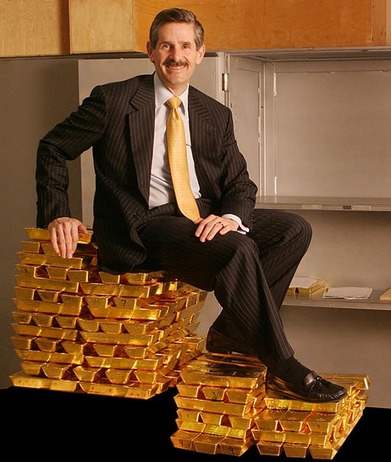
Would you reveal everything on-line?
Toronto-based gold mining company Goldcorp was in trouble. Besieged by strikes and lingering debts in a contracting market, the company had terminated its mining operations.
Most analysts assumed that the company’s 50-year-old mine in Red Lake, Ontario, was dying.
Without evidence of substantial new gold deposits, Goldcorp was likely to fold.![]()
Chief Executive Officer Rob McEwen refused to accept that the end was nigh. He took an unconventional approach and decided to break some of the unwritten rules of the mining industry. Instead of hiding the proprietary, and potentially very revealing, geological data, he decided to publish it on the Web for all to see.
In total it was some 400 megabytes worth of information about the 55,000-acre property.
He challenged the world to do the prospecting. The “Goldcorp Challenge” made available a total of $575,000 in prize money to participants who submitted the best methods and estimates.
Within weeks, submissions from around the world were flooding into Goldcorp headquarters. There were entries from more than 1,000 virtual prospectors in some 50 different countries. There were entries from graduate students, management consultants, mathematicians, military officers and a virtual army of geologists.
“We had applied math, advanced physics, intelligent systems, computer graphics and organic solutions to inorganic problems. There were capabilities I had never seen before in the industry,” said McEwen. “When I saw the computer graphics, I almost fell out of my chair.”
The contestants identified 110 targets on the Red Lake property, more than 80% of which yielded substantial quantities of gold.
In the end 8 million ounces of gold have been found, worth well over $3 billion. (Not a bad return on a half-million dollar investment.)
The process also introduced Goldcorp to state-of-the-art technologies and exploration methodologies, and more advanced approaches to geological modelling. Goldcorp went from being an under-performing $100-million company to a $9-billion juggernaut. One hundred dollars invested in the company in 1993 is worth more than $3,000 today.